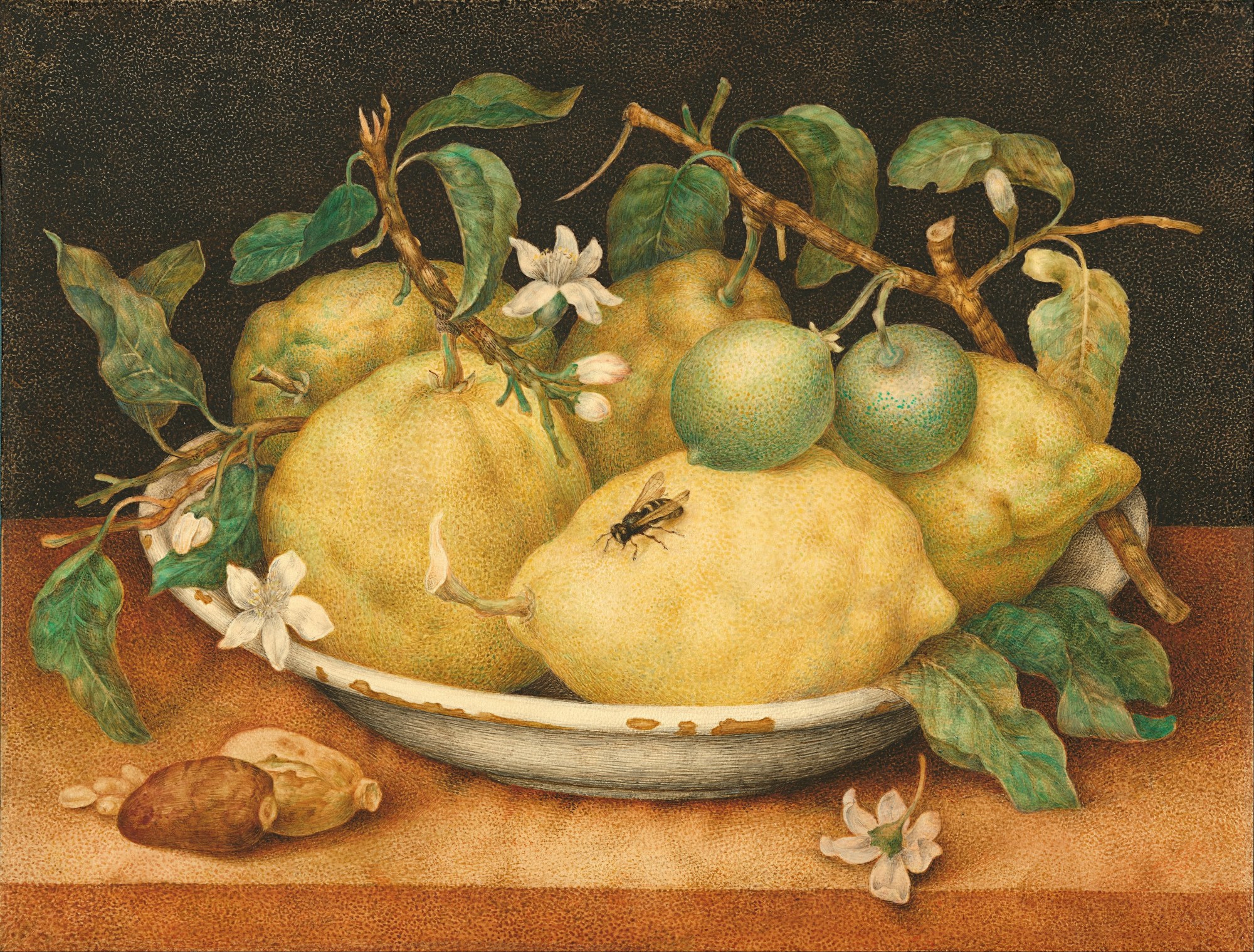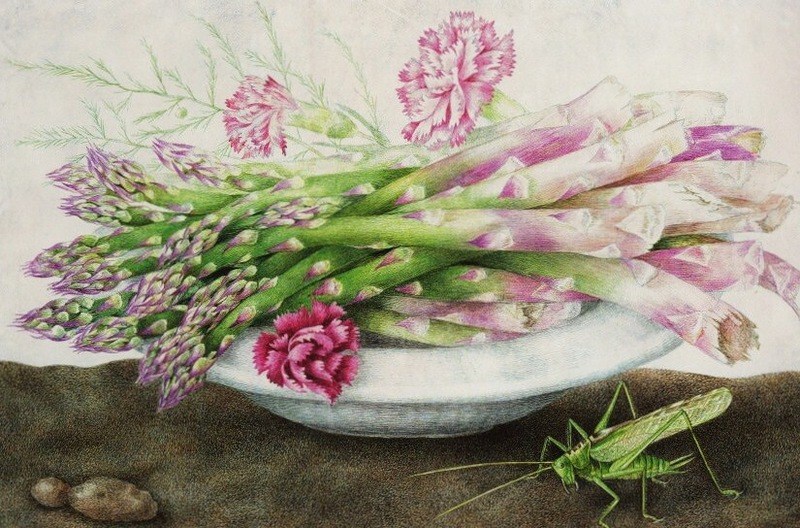The Nature Inspired Food Still Lives of Giovanna Garzoni
Venetian painter Giovanna Garzoni was born at a time when not much was expected from women besides keeping house and churning out children. Nevertheless, this week’s influential artist managed to stand proudly in a male-dominated sea of artists. Her weapons of choice? Delicate fruits, fragile insects, and muted colors blended seamlessly into nature inspired food still lives.
Coming from a long line of artists, Garzoni learned the basics of painting early on. She immediately showed promise and had the rare opportunity to work as an apprentice for an established artist (her uncle) as a teenager. At just 16 years old, she started to receive her first commissions. She committed to remaining celibate in order to bypass marriage and motherhood, instead preferring to pour herself into her artwork. Thanks to steady stream of paying gigs, she became self-sufficient. It’s said that as she gained popularity, her paintings were so sought after that she could sell each for “whatever price she wished”.
So, what exactly made her work so irresistible? Just as she flipped the script as a successful Renaissance female artist, she also turned her genre of choice upside down.
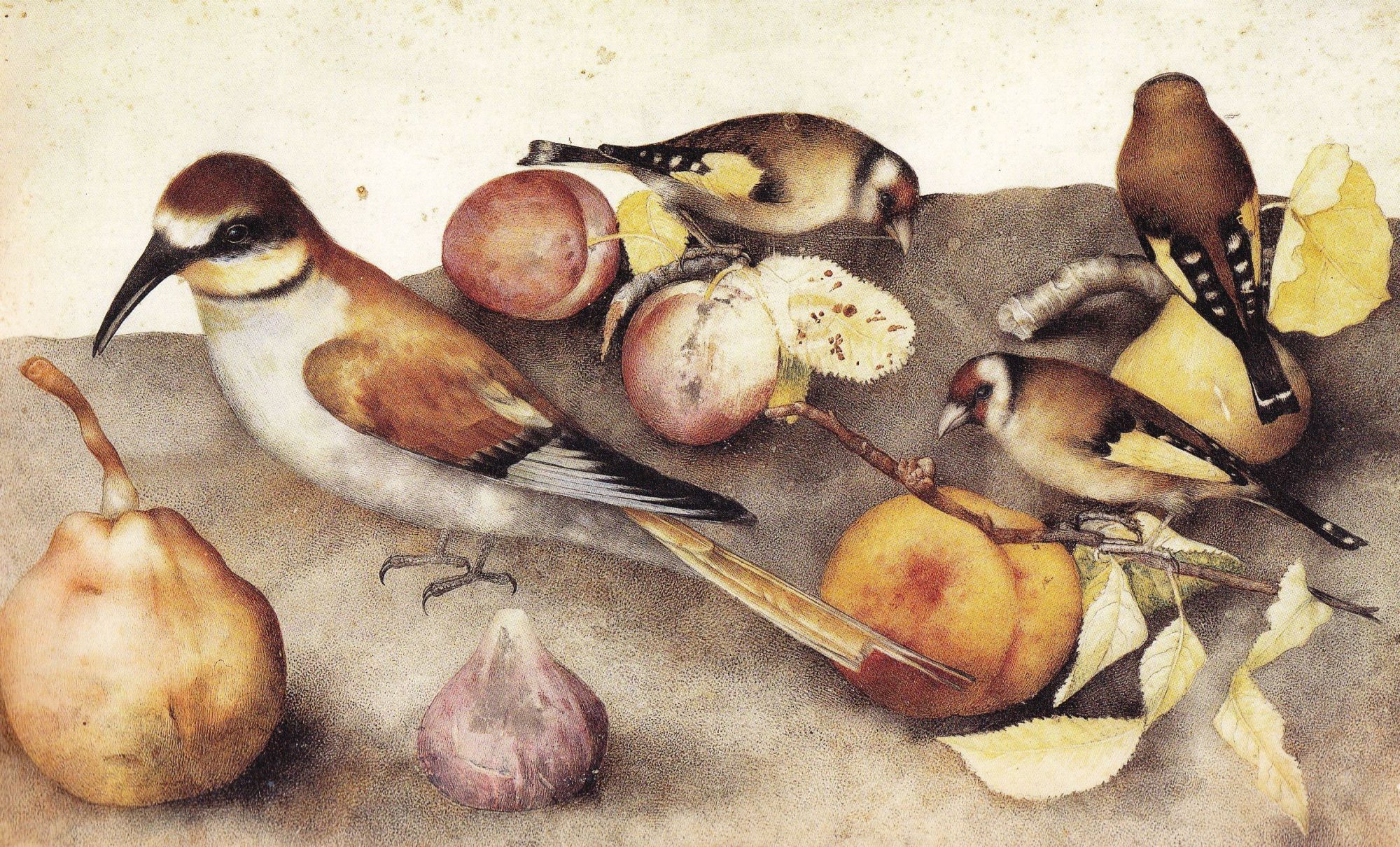
Because of her wealth, Giovanna had the– ability to travel across Europe in order to learn from other artistic minds. As she made her rounds, she almost certainly took note of the trends popping up outside of Italy. The dawn of the Baroque era, still lives in particular grew dark and dramatic – tonally and thematically. Her peers portrayed overturned goblets, animal carcasses shrouded in shadow, and other cheery reminders of our impending deaths. Rather than following in their footsteps, however, Giovanna Garzoni took a lighter approach to her nature inspired food still lives.
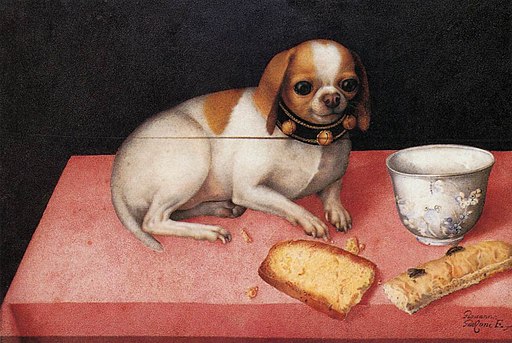
Her vellum on tempura pieces stick out from other paintings of the era immediately, often sporting rich yellows, pinks, and creams over rich blacks. She allowed mice, flies, and salamanders to weave through her compositions amongst budding flowers. But most importantly, she almost always incorporated food into her nature inspired still lives.

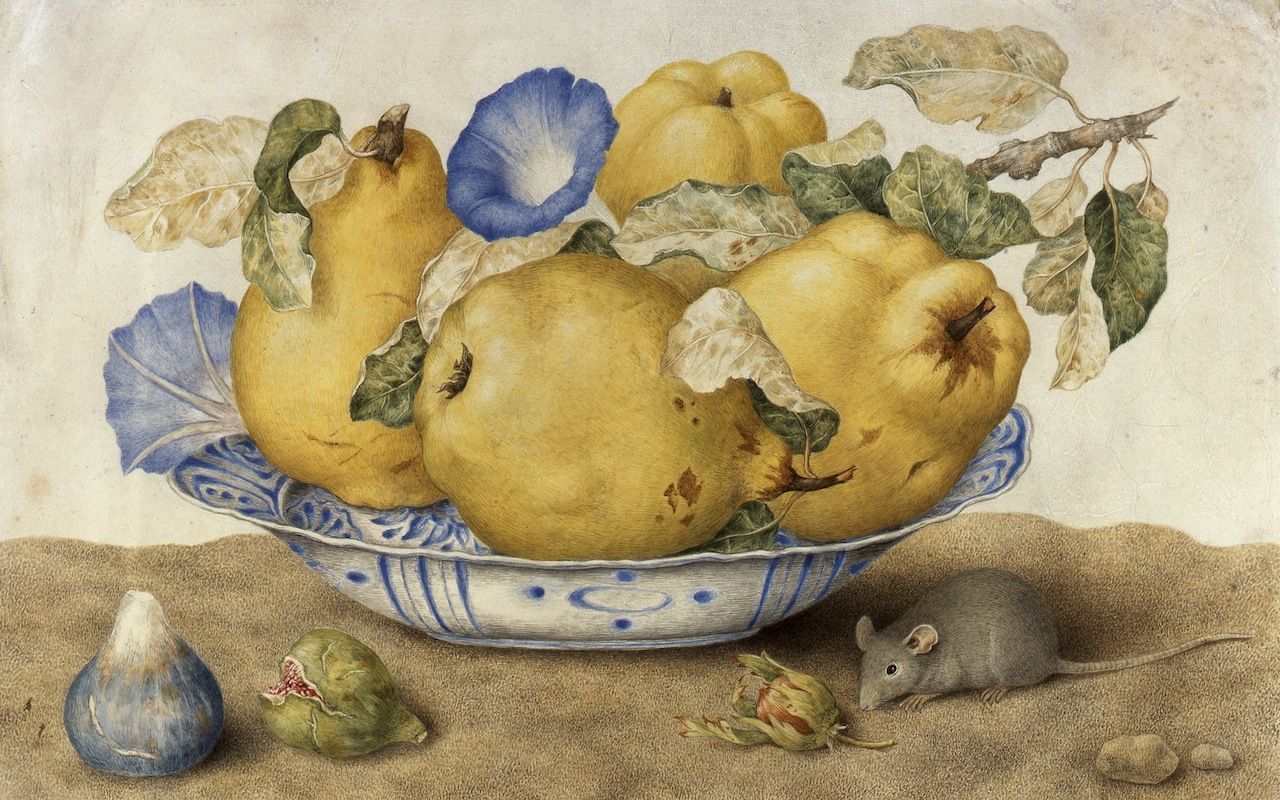
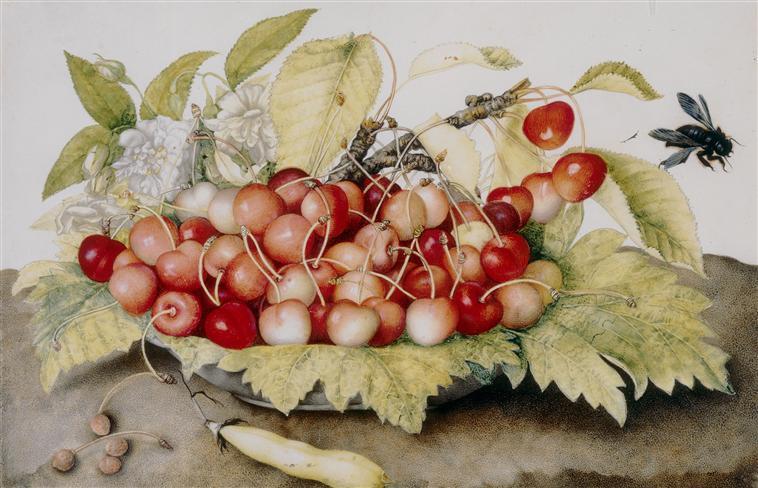
More often than not, that came in the form of freshly plucked fruit, plump and inviting. Figs, pomegranates, and peaches – long ago established as symbols of fertility and femininity – sport loping, organic curves that are simultaneously imperfect and beautiful. Skins and shells are sometimes pried away, revealing enticing fleshy insides. Even the presence of animals scurrying about drives home the idea that the fruit exists to provide nourishment and fuel new beings.

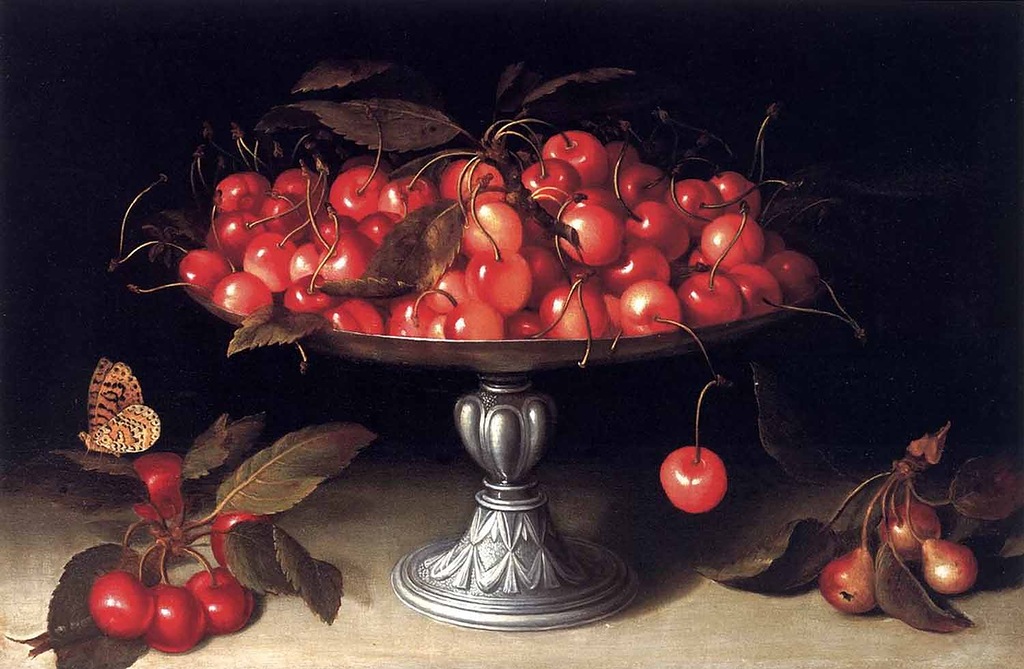
Though it may seem counter intuitive to the genre, she chose to focus on what was alive in her artwork rather than stagnant subjects. The food she incorporated wasn’t just for show. Every loaf of bread or bowl of oranges was used to send a message.
Evidently, wealthy patrons found her brighter outlook to be refreshing.
When used correctly, food can be more than food. Garzoni’s nature inspired food still lives prove that much. Focusing on shapes and colors alone is all well and good. But what could that stalk of asparagus or cob of corn represent on a deeper level? Truly great food artists of all sorts don’t just use their fare as a prop. With careful consideration, just about anything can be transformed into a means of communicating without a word.
